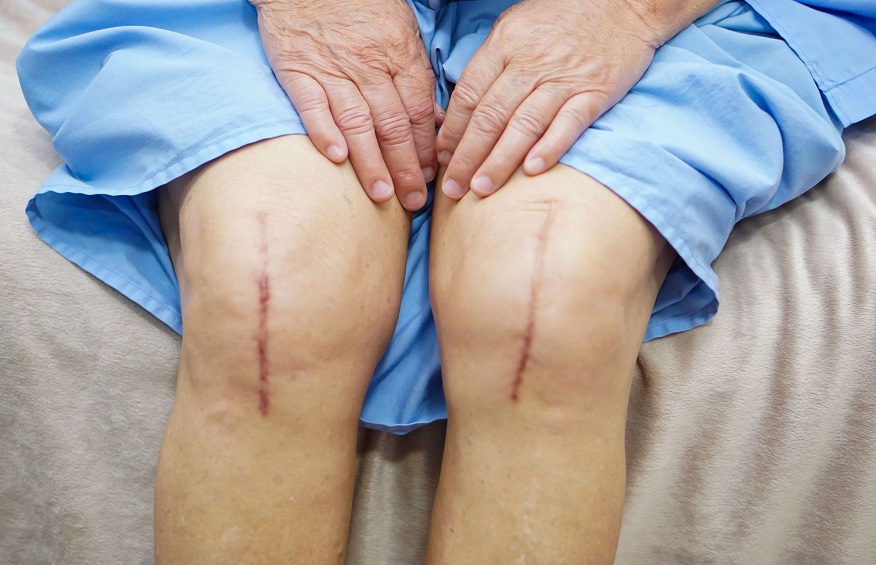The installation of a knee prosthesis makes it possible to regain comfort and mobility, in particular for patients suffering from knee osteoarthritis. It can be considered when other treatment routes have reached their limits or have failed. Doctor Charles Catier, knee specialist at the Rennais Institute of Orthopedic Surgery and Sports Medicine, presents unicompartmental and total knee prostheses, their indications and the postoperative course.
What is a UniCompartmental Knee Prosthesis?
The surgical intervention concerns the replacement of part of the knee, almost mainly the internal femoro-tibial compartment. One condition is that the knee must be stable in all planes (antero-posterior and medio-lateral). There should be no ligament damage, especially the anterior cruciate ligament. The UniCompartmental Knee Prosthesis (see photo above) compensates for cartilage wear by playing the role of a “wedge”. The placement of a UKA is less cumbersome than that of a Total Knee Prosthesis.
Indications for the Unicompartmental Prosthesis
The UniCompartmental Knee Prosthesis is prescribed in cases of advanced osteoarthritis of a single femoro-tibial compartment of the knee, osteonecrosis of the internal condyle with localized pain opposite. It concerns patients over 55, with a stable and flexible knee and a BMI (body mass index) of less than 35.
What is a Total Knee Prosthesis?
During the intervention, the orthopedic surgeon will replace the entire knee: femoro-tibial joint and joint between the patella and the femur (femoral-patellar). The installation of a Total Knee Prosthesis is possible even if the cruciate ligaments which contribute to the antero-posterior stability are broken. Indeed, it is the shape of the prosthesis which ensures its stability. On the other hand, the lateral ligaments must be intact.
Indications for Total Knee Prosthesis
Osteoarthritis of the knee, or gonarthrosis, is the main pathology leading to an intervention and the fitting of a prosthesis. It can be symptomatic, idiopathic (of unknown cause), or secondary after trauma to the knee.
Meniscectomy, which consists of the removal of an injured part of the meniscus. The intervention carried out by an orthopedic surgeon is done by arthroscopy.
The patient to whom the installation of a knee prosthesis is proposed is in a situation of failure of medical treatment. This assumes that it had been well conducted and adapted to the patient, and that all possible avenues had been explored without success (analgesics, anti-inflammatories, infiltrations and visco-supplementation).
The surgical gesture consists, by an incision in front of the knee of 10 to 15 cm, to recut the worn femoral and tibial surfaces using specific instrumentation. The prosthesis will then be put in place, cemented or not to the bone depending on its quality. In this case, the prosthesis is covered with a porous osteoconductive surface in which the bone pushes back. For the PUC, the rest of the knee is not affected.
Hospitalization for placement of a UniCompartmental Prosthesis:
D0: Intervention of 60 to 70 minutes under general or loco-regional anesthesia. Raised at the edge of the bed during the day.
D1: Resumption of weight bearing and removal of the drain. Walking on crutches with the physiotherapist.
D2: Work on the stairs, then exit validated by the surgeon and the medical team.
The intervention for fitting a Total Knee Prosthesis is a little longer, between 60 and 120 minutes. The suites are similar to those of the PUC.
What is Accelerated Recovery After Surgery (ARAS)?
ERAS is a medical-surgical protocol to improve recovery and function after prosthetic surgery. In particular, it reduces the occurrence of complications, as well as the average length of hospital stay. It also helps to increase patient satisfaction and confidence in their surgeon. Not all patients are eligible for this type of care in the context of a knee prosthesis.

